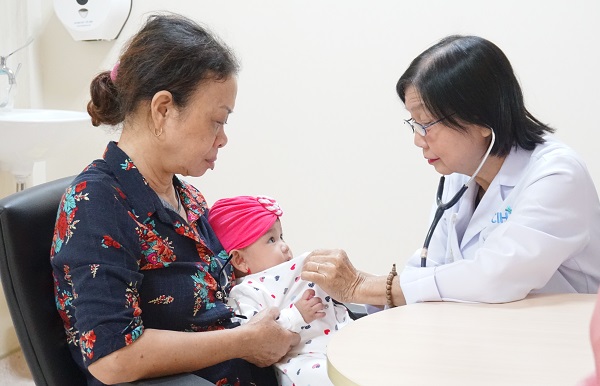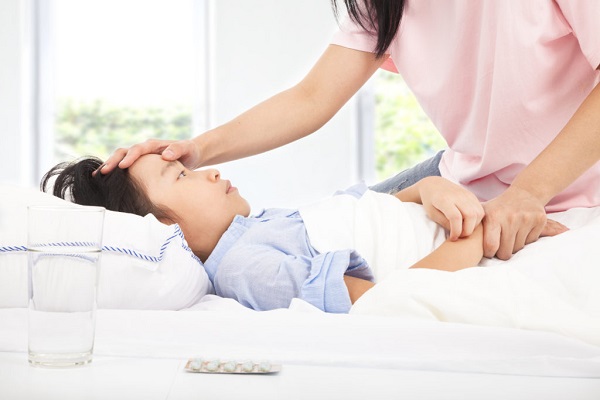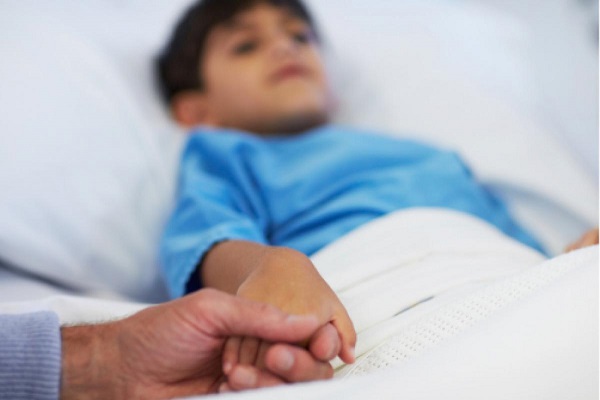Fevers seem to be the one that parents worry about the most. You may wonder if a fever is too high and whether you are using the best method to check your child's temperature. Here are some tips that can help.
When to take your child’s temperature
You might want to take your child’s temperature if your child is:
- unwell and feels warmer than usual
- irritable and crying
- more sleepy than usual
- in pain
- refusing to drink
- vomiting
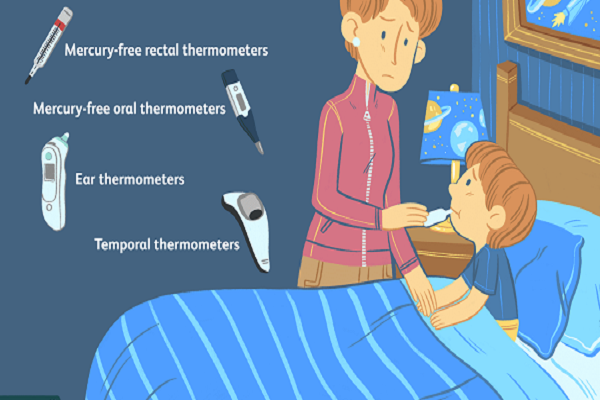
Types of thermometers
It’s best to check your child’s temperature using a thermometer. There are many devices used to measure a child's temperature, including an ear thermometer, temporal thermometer (which you apply to the forehead), or a mercury-free oral or rectal thermometer.
Feeling your child’s skin temperature by putting your hand to his forehead isn’t a reliable way of diagnosing a fever. Most modern thermometers are digital thermometers.
Digital probe thermometers
Digital probe thermometers are the most basic and common types of thermometers. You can use a digital probe thermometer to take your child’s temperature in two main ways:
- Orally – you put the thermometer in your child’s mouth under the tongue.
- Axillary – you put the thermometer under your child’s armpit.
Oral temperature readings are usually the most accurate from digital probe thermometers.
If you plan to check your child’s temperature orally and under her armpit using the same thermometer, make sure to clean it well between each use. You can clean a thermometer using warm soapy water or an alcohol wipe.
Although you can use a digital probe thermometer to take a rectal temperature reading, this isn’t recommended. There’s a risk that the tip of the thermometer could damage the lining of your child’s rectum.
Digital ear thermometers
Digital ear thermometers are specially designed for use in children’s ears. Ear thermometers are quick and easy to use, but they can be a little inaccurate.
Digital forehead or temporal artery thermometers
Digital temporal artery thermometers measure the temperature on your child’s forehead. An advantage of forehead thermometers is that you can check a sleeping child without waking him.
Other thermometers
Digital pacifier thermometers, fever strips and smartphone apps aren’t recommended because they’re not very accurate. Mercury thermometers can poison a child if they break. If you’re using a mercury thermometer, consider replacing it with one of the types of digital thermometers above.
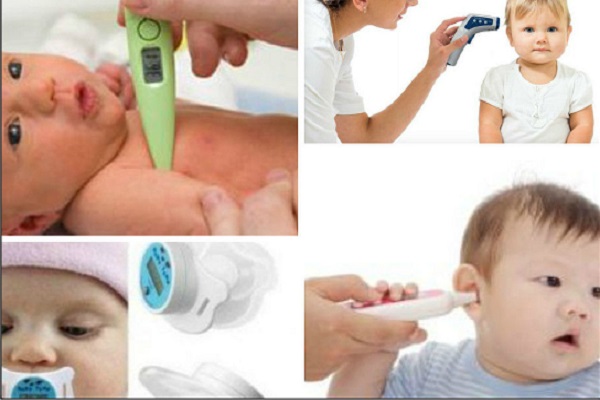
Taking your child’s temperature
No matter what kind of thermometer you have, it’s important to carefully read the instructions that come with it before using it for the first time. Here are more tips to help you take your child’s temperature accurately.
Oral temperatures
You take an oral temperature using a probe thermometer:
- Wait five minutes after your child has had a hot or cold drink.
- Place the thermometer well under one side of your child’s tongue.
- Have your child hold it in place with her lips, not her teeth, and tell her to breathe through her nose.
- Wait until the thermometer beeps and then check the digital display for the temperature reading.
- Add 0.5°C to your child’s oral readings to estimate his true body temperature.
If your child has a blocked nose because of a cold, she might find it hard to breathe with her mouth closed.
You can take oral temperatures in children over four years. It’s hard to take an oral temperature in children younger than this, because they can’t always co-operate with you.
Armpit temperatures
You take an armpit temperature using a probe thermometer:
- Place the thermometer in your child’s armpit.
- Close your child’s arm over the thermometer, holding his elbow against his body.
- Wait until the thermometer beeps and then check the digital display for the temperature reading.
- Taking your child’s temperature under the armpit is usually the easiest way to do it, especially in young children. Unfortunately, it’s also less accurate than an oral temperature reading.
Add 1°C to your child’s armpit readings to estimate her true body temperature.
Ear temperatures
You take an ear temperature using an ear thermometer:
- Put a plastic cover over the tip of the thermometer.
- Put the tip gently just inside your child’s ear canal.
- Wait until the thermometer beeps and then check the digital display for the temperature reading.
If you use a digital ear thermometer correctly, it’s accurate to within about 1°C, as long as your child’s ear canal isn’t too small or doesn’t have too much wax in it.
Forehead temperatures
You take a forehead temperature using a temporal artery thermometer:
- Check that your child’s forehead is dry before starting.
- Gently scan the thermometer across your child’s forehead.
- Remove the thermometer and then check the digital display for the temperature reading.
When to see a doctor
If your baby is under three months and has a fever above 38°C, or if your child is immunocompromised (has a weakened immune system) due to a medical condition or medical treatment and has a fever above 38°C, then you should see a GP, even if they have no other symptoms.
For all other children, take them to see a GP if their temperature is above 38°C and they have any of the following symptoms:
- a stiff neck or light is hurting their eyes
- vomiting and refusing to drink much
- a rash
- more sleepy than usual
- problems with breathing
- pain that doesn’t get better with pain relief medication.
Also take your child to a GP if they:
- have a fever above 40°C, but show no other symptoms
- have had any fever for more than two days
- seem be getting more unwell
- have had a febrile convulsion.
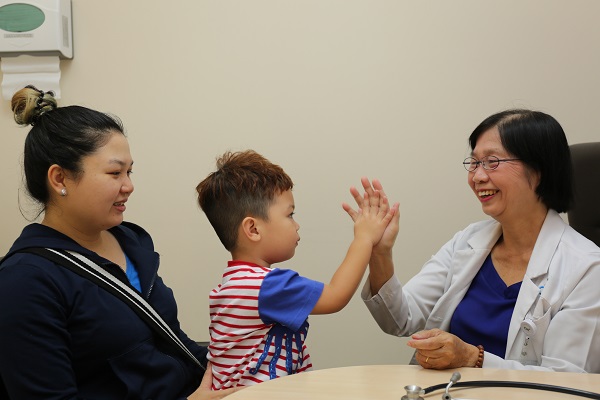
Nguyen Bach Hue, II, MD- Head of Pediatrics Dept. & Neonatal Intensive Care Unit.
For appointment or more information about medical services provided by our Pediatrics Clinic, please contact:
- Head of Department: Dr. Nguyen Bach Hue
- Nurse Station: (8428) 6280 3333, ext. 8164 or 8181
- Reception Desk: (8428) 6280 3333, ext. 8158 or 8189
- Operator: (8428) 6280 3333, ext. 0
- Address: No. 3, 17A Street, Binh Tri Dong B Ward, Binh Tan Dist. (Next to AEON Mall Binh Tan). Ho Chi Minh City.
- Website: https://cih.com.vn/en/
- Email: This email address is being protected from spambots. You need JavaScript enabled to view it.













